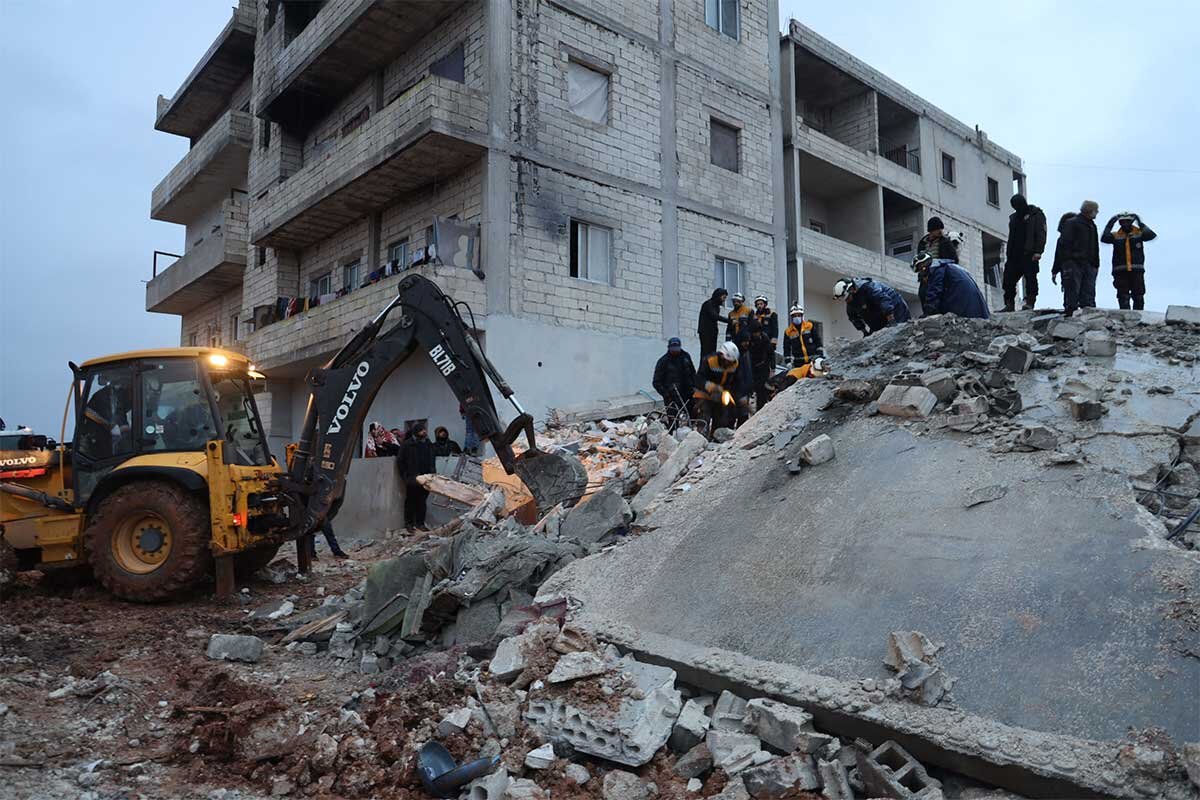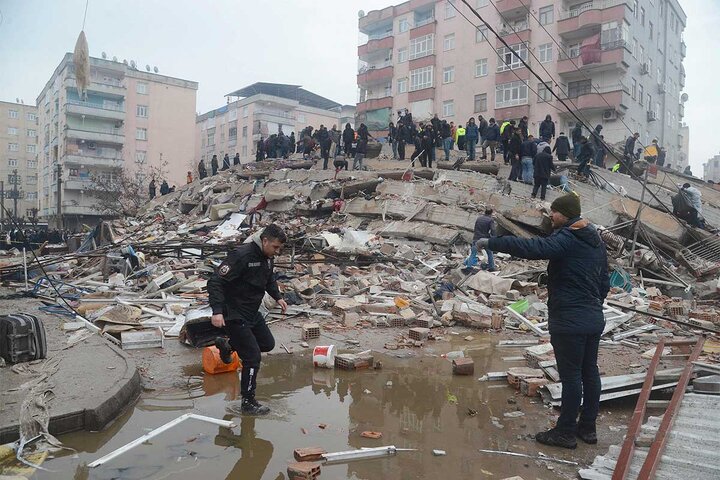Iran (IMNA) - According to estimates, 50,000 to 70,000 people will lose their lives in Turkey and along the Syrian border. The initial 7.8-magnitude earthquake struck at 4:17 a.m. near Nurdagi.
The earthquake caused substantial destruction in Syria, Iraq, Lebanon, Palestine, Egypt, Cyprus, and possibly certain regions of western Iran. Only nine hours later, a follow-up earthquake with a magnitude of 7.5 struck on another fault trend, with an east-west orientation triggered by the previous earthquake.
Seismologists determined that the epicenter was located on the East Anatolian Fault at a depth of roughly 18 km, about 26 kilometers to the east of the Turkish city of Nurdagi. The earthquake's northeastern radiation devastated central Turkey and Syria.
Disastrous double earthquakes on the East Anatolian Fault Zone ended a prolonged silence over a seismic gap on February 6, 2023.

The entire country of Turkey is being pushed aside as a tectonic plate from the Arabian Peninsula enters the Eurasian Plate from the north. Turkey is relocating out of the way to the west while Arabia gradually heads north and collides with it.
For thousands of years, this region has endured earthquakes resulting from this tectonic movement, notably the one in 1138 that completely destroyed the Syrian city of Aleppo. Many thousands of people have died in earthquakes that occurred more recently, such as the one that hit the city of Izmit in 1999. The quake on Monday is thought to be the strongest that has occurred in Turkey in more than 80 years.
The North Anatolian Fault has been the site of the majority of the greatest earthquakes in the last century. However, tension has been rising along another important line, the East Anatolian line; the fault has seen some large earthquakes in the past. However, there hasn't been as much activity recently.
According to Fatih Bulut of the Kandilli Observatory and Earthquake Research Institute at Boaziçi University in Istanbul, several researchers had begun to fear the fault was due for a large quake. His research group and others had run computer models that predicted an earthquake of magnitude 7.4 or bigger on this fault.
This earthquake happened as a result of two pieces of Earth sliding horizontally past each other. The Arabian Plate is currently displacing the Anatolian Plate in this instance. This sliding motion also caused the shaking to be dispersed along the fault for many kilometers. The area that is impacted is quite large. In Turkey, ten cities' structural integrity was compromised.
Although the country has geological regulations in place to keep structures from collapsing, certain older structures may be particularly susceptible given that this region hasn't seen major quakes in decades.

However, Ian Main, a seismologist at the University of Edinburgh in the United Kingdom, says it does not mean that seismologists could predict with certainty when a major earthquake would occur. According to him, a fault's time intervals between large quakes can fluctuate considerably and in unanticipated ways. They don't follow a schedule as buses do, so they're not like buses.
And this particular fault isn't the only source of the shaking. The Dead Sea Transform, another fault zone where the Arabian, Anatolian, and African plates intersect, was affected by the first earthquake's aftershocks. A few hours later, a second earthquake with a magnitude of 7.5 occurred on a neighboring fault that isn't part of the East Anatolian Fault but has been charted.
The question of whether Istanbul will be struck by the next significant earthquake has been extensively discussed in public opinion following the two destructive earthquakes. Of course, it should be noted that a direct impact on the faults in the Istanbul region from any of the two earthquakes that occurred on February 6 is doubtful given the distance of 700 kilometers.
Istanbul should implement an in-depth disaster response plan, and critical infrastructure should be strengthened to gear up the city's government offices, hospitals, military bases, and fire department buildings for an emergency response after a strong temblor strikes.


Your Comment